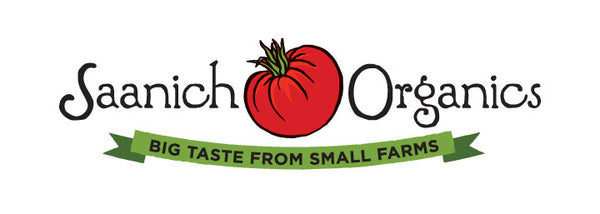My Store
Kale, Red Russian (AVAILABLE AT SEEDY SATURDAYS)
Kale, Red Russian (AVAILABLE AT SEEDY SATURDAYS)
Couldn't load pickup availability
Most tender island-suited kale. Direct seed from spring to early fall for salad or transplant seedlings out in May for bunching size. Plant 45-60cm apart for bunching; seed in rows for salad. We overwinter our kale for occasional winter harvest, and harvest the sweet broccoli-like buds in the spring. 40 days to salad-sized, 70 days for cooking greens.
Certified organic in British Columbia. IOPA # 1606, 1105, 1920.
How to Save Kale Seed
Fast Facts
Latin: Brassica oleracea
Cross Pollination: Broccoli, brussel sprouts, cabbage, cauliflower, collard, kale, kohlrabi, all other Brassica oleracea varieties
Isolation Distance: 800 feet
Minimum Population Size (variety maintenance): 20-50 plants
Minimum Population Size (genetic preservation): 80 plants
Seeding and Care
Kale is a biennial plant, it will produce seeds early in its second season of growth, or in some cases late in the first season. Grow as you typically would for a fresh kale crop. Space plants 12” apart and harvest as you wish, but stop the harvest in late summer or early fall to allow plants to grow and recover before overwintering. Overwinter in the ground where the climate permits. Kale will flower early the following spring.
Seed Harvest
When the majority of pods have formed and filled out, but before they dry and go brown, cut the plants and lay on a tarp to dry. It is important to harvest the plants while there is still a tinge of green to the plants, as they are prone to shattering, meaning the pods will burst open as they dry and the seeds will fall to the ground. Birds eating your brassica seeds is a surefire sign that it’s time to get in there and harvest.
Seed Cleaning
Thresh the seeds by laying the entire dry seed stalks on a tarp and stomping and shuffling on the plants to crack open the pods and detach the seeds. It’s important that seeds are very dry at this stage to prevent them being crushed by the threshing process. Shake the threshed material through a screen, allowing the seeds to pass through and the larger debris to remain on the top. Then, winnow using wind or a fan, pouring seeds from one container to another while allowing the lighter chaff to blow away.


